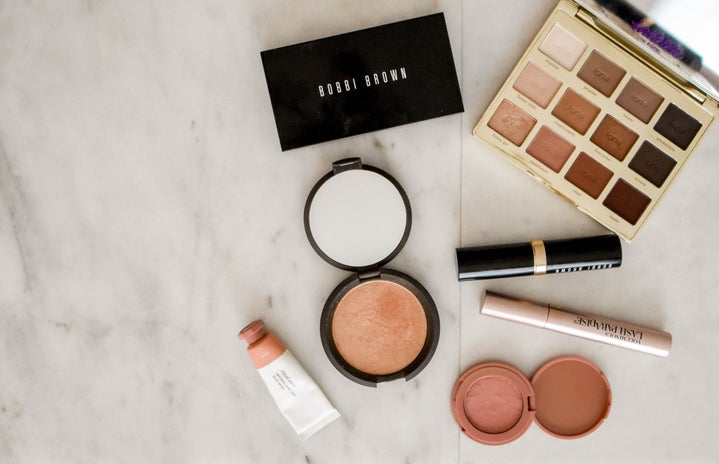Do you ever wonder what exactly is in your makeup? I know that I do! Something that is going on your eyes and close to your mouth/nose should be something relatively healthy. However, sometimes we simply do not know what is in the prodcuts we are using. Recently I have been doing some research on what to look out for in makeup products.
1. Parabens: These are often present and although they are regulated by the FDA, it doesn’t mean that you should still use products that contain them. There are many different forms of parabens, so anything that ends in -paraben should be avoided if possible because they have been linked to breast cancer and other illnesses. The only good side of parabens is that it has been one of the leading compounds to stop bacteria growth.
2. Fragrance: This is perhaps the most suprising of all the ingridents within products. That is because it’s often a secret to buyers in order to protect the “secret formula” of the product, which can contain a number of different things. This is probably the most difficult one to avoid.
3. Phthalates: These are often found in lotions, nailpolish and hairspray. This is sometimes put under the fragrance section of the product. However it has been linked to several serious side effects. Phthalates are used to help keep products flexible, such as flexible hold hair spray.
4. Synthetic colors: Dyes and colors are a hot topic in today’s news. From Gatorade to cookies, dyes are found in just about every product. This is also true in skin care, however it is important to avoid synthetic colors especially. These are denoted with a “FD&C” or a “D&C”. These are a suspected to be a carcinogen.
Although it is scary that there are so many harmful things out there, its important to understand that its all about reducing your exposure. That does not mean you have to go out and re-buy everything that contains something harmful. However, changing one or two products you use everyday such as your deodorant or shampoo, could significantly reduce your exposure. It is all about finding a balance! If you are curious as to what is in your products you can visit www.ewg.org. It allows you to search your products to see how toxic they are based on a scale as well as gives you all natural alternatives!
If you do find one of your products at a concerning level, there are many, many natural alternatives out there!

